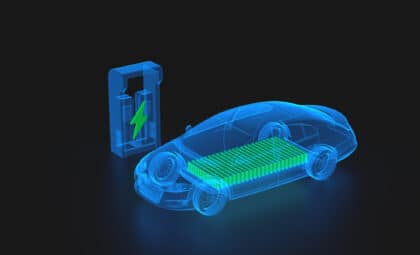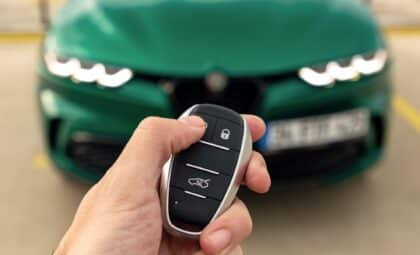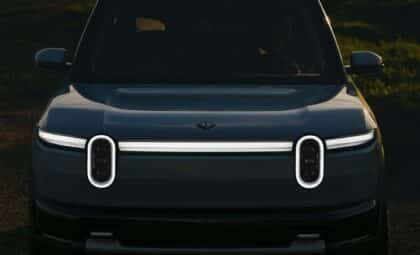 Photo: The News Wheel
Photo: The News Wheel
There’s always a first time for driving with a trailer, whether you’ve rented a moving trailer to transport furniture to your college dorm or finally reached retirement and purchased your dream boat. After you’ve read your vehicle’s instruction manual and the door jamb sticker (verifying you’re not exceeding the maximum towing weight), you need to make sure you know how to drive it properly. Here are some recommendations for first-time towers.
Looking for a Good Deal on a Truck to Pull Your Boat? Here’s why it’s a wise idea to buy a pre-owned pickup
Practice before departing
It’s worth being a couple of minutes late to your destination to the take time to familiarize yourself with your trailer. Get to know how the unit hooks up and detaches from the hitch, how it affects your rear visibility and blind spots, and how the extra weight impacts acceleration and braking.
Drive a couple laps around the neighborhood or an empty parking lot before heading onto main roads to feel comfortable with the extended length of your caravan and its turn radius.
Leave extra space
Make sure there’s more room than usual around the vehicle and trailer so there’s a substantial buffer between you and other objects in your vicinity. Leave multiple car lengths in front of you for stopping distance (due to the velocity caused by the trailer’s weight) and behind you when you change lanes.
You’ll need to make wider turns due to your longer length, so being careful not to clip other vehicles or the curb. Turn to outer lanes instead of inner lanes and don’t swing the vehicle at too sharp of an angle or else the trailer will jackknife.
If you stop for gas, pull through to the further pump. Don’t let your caboose hang out and block other vehicles.
Like to Spend Your Weekends in Nature? This list determines the best used vehicles for weekend adventurers
Go slow and steady — but don’t ride the brakes
Don’t jackrabbit. Take time to accelerate and brake, coasting and gradually accelerating so you don’t put extra strain on the engine or the hitch. Try to avoid having to move in reverse. If you do, take it slow and steady, making constant adjustments to make sure you don’t lose control.
Don’t ride the brakes, especially downhill. Coast whenever possible, and let the vehicle come to a gradual stop at red traffic lights. Use your vehicle’s tow/haul mode when traversing hills. It automatically downshifts the transmission based on the angle of descent.

Photo: Chevrolet
Keep an eye on the trailer
You should always keep an eye on your side mirrors and rearview mirror, but that’s especially important when you’re towing a trailer behind you. Watch your caboose for anything unexpected. Many new trucks offer technology for trailer guidance and cameras to assist in monitoring your load.
If you’re towing a trailer that’s taller than your vehicle, keep that in mind and monitor its clearance. Measure the height of the trailer beforehand so you know what drive-thrus and tunnels you can enter. Watch for low branches hanging over the road, too!
Pull over when necessary
Emergencies happen, so always be prepared to pull over. Drive in the shoulder lane and be ready to flash your hazard lights if something is amiss. Gradually decelerate and pull over to the berm if you need to change a punctured tire or strap down a loose tarp that’s flapping in the wind. Give yourself plenty a large opening to get back on the road; it’s doing to take you a while to accelerate to full speed.
Your first time driving with a trailer may be intimidating, but taking the journey carefully and conservatively will build your confidence and prepare you for many more trips to come.
Aaron is unashamed to be a native Clevelander and the proud driver of a Hyundai Veloster Turbo (which recently replaced his 1995 Saturn SC-2). He gleefully utilizes his background in theater, literature, and communication to dramatically recite his own articles to nearby youth. Mr. Widmar happily resides in Dayton, Ohio with his magnificent wife, Vicki, but is often on the road with her exploring new destinations. Aaron has high aspirations for his writing career but often gets distracted pondering the profound nature of the human condition and forgets what he was writing… See more articles by Aaron.









